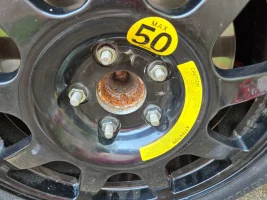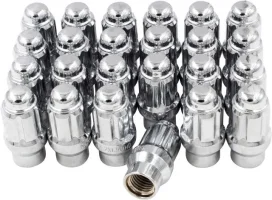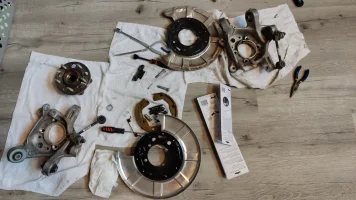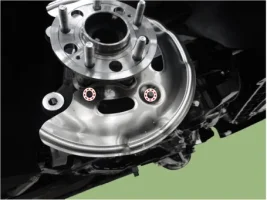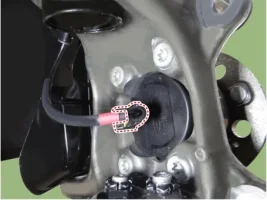As I suspected above, just removing the front brake caliper gave plenty of clearance to swap out the studs, one at a time. I went with 60mm long studs, as I am using at most 10mm spacers. As can be seen in the pic below, there is a limited amount of clearance length-wise to insert the new stud somewhat at an angle. these 60mm long studs were no problem. I'm not sure if longer ones would clear also.
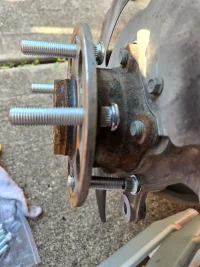
To pull the new stud into the interference-fit "
seat", you'd need open-ended M12x1.5 lug nuts. I happen to have a full set from a previous vehicle, but they are not that expensive if you need to buy some. There are lots of ways to do this.
One way is to reverse the lug nut and pull the stud against the wheel hub face.
Pro: you can keep an eye on the back of the stud to see when it has fully seated.
Con: you'll most likely need an impact driver, as turning the nut manually with a socket will likely turn the stud as well... even if you lube it well with anti-seize like I did here.
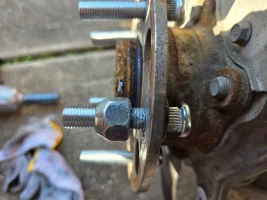
Another way is to put the rotor and wheel back on - as "spacers". I happen to have an old 17" spare wheel lying around, so I used it, as I don't care if the conical
seat gets a little worn. Still, I lubed it with anti-seize anyway. I sure as heck wasn't going to do this with expensive aftermarket wheels.
Pro: No impact driver needed. Turning by hand is no problem.
Con: You cannot see the back of the stud to see if it is fully seated, so you need to be careful about stopping when you feel the torque increase, as you "hit the wall". It
is possibly to over-torque these studs, even if they are 10.9 or higher grade. Stop periodically and measure the protruding length. You can start with impact driver, but I'd hand-crank that last 1/4"... just so you can feel the torque to make sure you don't over-do it.
